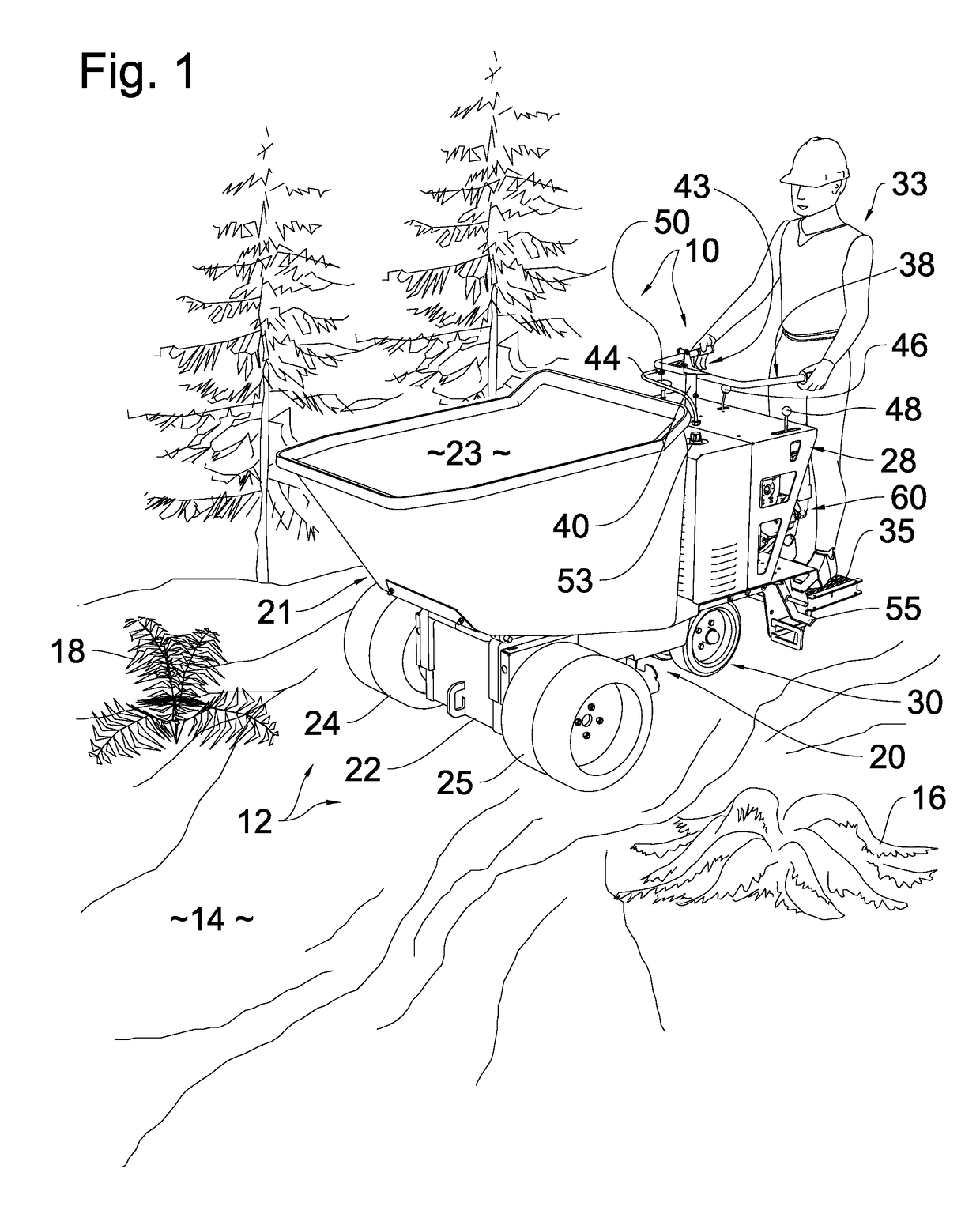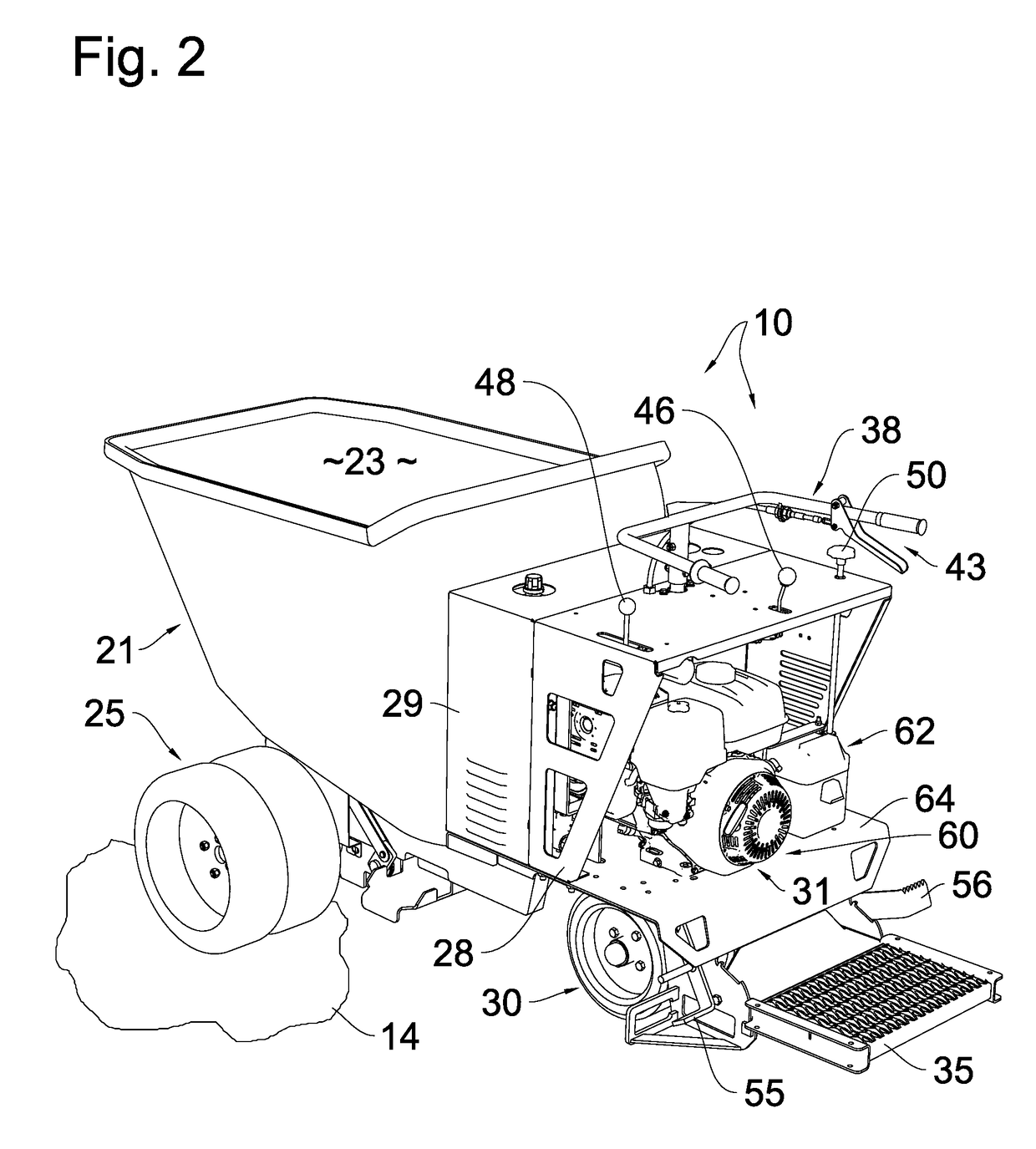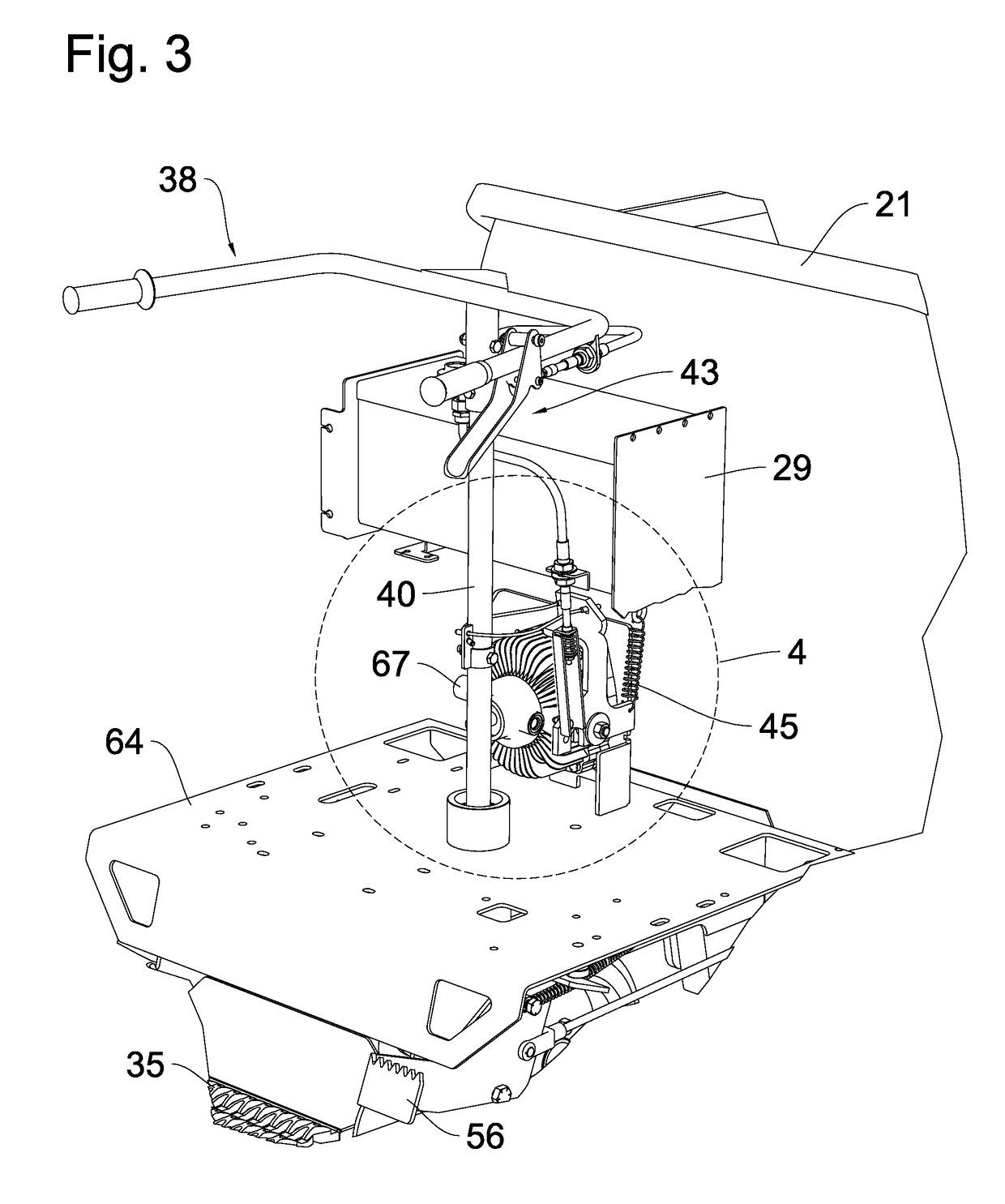Steering Responsive Speed-Controlled Buggy
a technology of speed control and steering, applied in the field of wheeled vehicles, can solve the problems of aggravated tipping tendency, irregular ground around most construction sites, and uneven ground around most construction sites, and achieve the effect of safe maneuvering over rough terrain
- Summary
- Abstract
- Description
- Claims
- Application Information
AI Technical Summary
Benefits of technology
Problems solved by technology
Method used
Image
Examples
Embodiment Construction
[0039]With initial reference now directed to FIG. 1 of the appended drawings, a self-propelled, steerable cart or buggy constructed in accordance with the best mode of the invention has been generally designated by the reference numeral 10. (For purposes of the disclosure the terms “cart” and / or “buggy” are used interchangeably.) Cart 10 is adapted to be deployed within a construction zone or work site 12, for moving materials or supplies or tools to and from the work site over an available pathway such as trail 14. The cart 10 is especially adapted for hauling small batches of liquid concrete to areas that cannot be safely or reached by a much larger and heavier concrete mixing trucks. As appreciated from FIG. 1, work site 12 is unlevel, and the course and irregular trail or pathway 14 is sloped and rough. There is debris 16, 18 scattered about. Therefore the cart 10 must be stable when heavily loaded, and it must be able to safely accommodate irregular and unlevel pathways while m...
PUM
 Login to View More
Login to View More Abstract
Description
Claims
Application Information
 Login to View More
Login to View More - R&D
- Intellectual Property
- Life Sciences
- Materials
- Tech Scout
- Unparalleled Data Quality
- Higher Quality Content
- 60% Fewer Hallucinations
Browse by: Latest US Patents, China's latest patents, Technical Efficacy Thesaurus, Application Domain, Technology Topic, Popular Technical Reports.
© 2025 PatSnap. All rights reserved.Legal|Privacy policy|Modern Slavery Act Transparency Statement|Sitemap|About US| Contact US: help@patsnap.com



